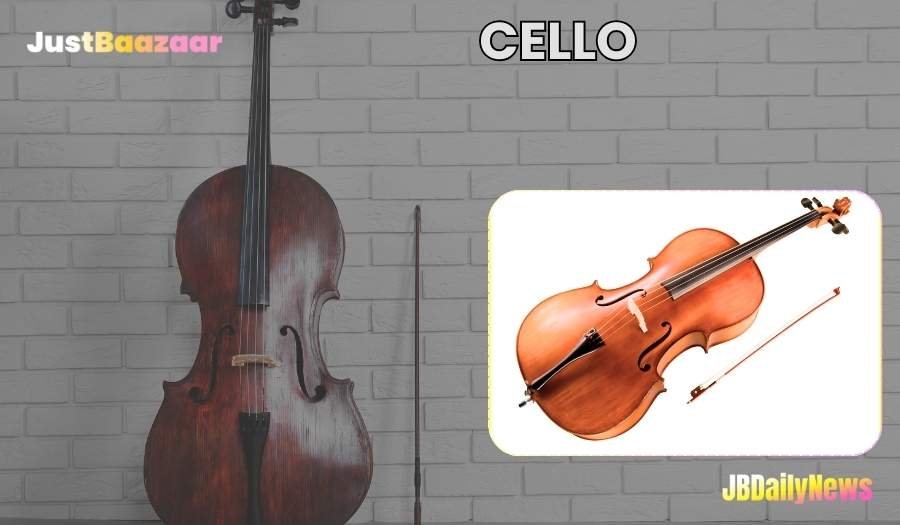The cello, renowned for its warm, rich tones and versatile role across musical genres, has captivated audiences for centuries. This guide explores the cello’s origins, structure, types, usage in different music genres, and its place in language and culture. Cello is a musical instrument.

1. Origin and History of the Cello
The cello, also called the violoncello, originated in Italy during the 16th century. Evolving from earlier bowed string instruments, it quickly became a mainstay of orchestras and chamber music ensembles.
- Early Development: Developed as part of the violin family, the cello initially had a smaller role and was overshadowed by other bass instruments like the viola da gamba.
- Growth in Popularity: By the 17th and 18th centuries, composers began recognizing its expressive range. Famous composers like Bach, Beethoven, and Vivaldi wrote extensively for the cello, solidifying its status in classical music.
- Global Influence: Over the centuries, the cello spread globally, playing significant roles in various genres, from classical to jazz and even rock. Its versatility and emotive sound have made it a celebrated instrument worldwide.
2. The Cello Family
The cello belongs to the violin family, which includes the violin, viola, and double bass. Its role lies between the high notes of the violin and viola and the deep bass of the double bass, making it the tenor or baritone voice within the string family.
- Similar Instruments: The cello is often compared to the double bass and viola da gamba due to its similar size and tonal range but differs in tuning, playing style, and structure.
3. Pronunciation, Spelling, and Etymology of the Cello
- Pronunciation: The cello is pronounced as /ˈtʃɛl.oʊ/.
- Spelling: C-e-l-l-o.
- Etymology: Derived from the Italian “violoncello,” a diminutive of “violone,” which was an early term for large stringed instruments.
4. How the Cello Works
The cello is a bowed string instrument played by drawing a bow across its four strings. Here’s a breakdown of its key components:
- Body: The cello has a hollow, wooden body, typically made from spruce or maple, which amplifies the sound.
- Strings and Bow: The cello has four strings, usually tuned to C-G-D-A, and is played with a bow made from horsehair or synthetic material.
- Fingerboard and Pegs: The musician presses the strings against the fingerboard with their left hand while controlling the bow with their right, adjusting pitch, volume, and tone by finger placement and bowing technique.
5. Is the Cello Difficult to Play?
Playing the cello requires precision and patience:
- Technique and Coordination: Cello players must coordinate both hands—one for fingering and one for bowing. Controlling the bow to produce a clear, sustained tone is often challenging for beginners.
- Physical Strength and Stamina: The cello’s size and weight require stamina, particularly when played for extended periods.
With regular practice, however, the cello becomes an incredibly rewarding instrument for those willing to invest the time.
6. Types and Sizes of Cellos
Cellos come in various sizes to accommodate players of all ages and body types:
- Full-Size Cellos (4/4): Standard cellos for adults.
- Smaller Sizes (1/2, 3/4, etc.): These cellos are scaled-down versions designed for younger or smaller players.
While standard tuning and structure remain consistent, different sizes allow musicians to find a comfortable fit without sacrificing sound quality.
7. Modern Times Usage of the Cello
The cello has found a place in diverse music genres:
- Classical and Orchestral Music: Essential to symphony orchestras, chamber ensembles, and solo recitals.
- Film Scores and Background Music: Cello music is often used in movie soundtracks for its emotive power.
- Pop, Rock, and Jazz: The cello has been adopted in non-classical genres, adding depth and emotional weight to songs.
8. The Cello in Folk Music
The cello has a unique role in folk music traditions:
- Traditional Folk Settings: While not as common as the fiddle or guitar, the cello appears in various folk styles, notably Celtic folk, where it adds a haunting, rich sound.
- Folk Fusion and Experimental Music: The cello has also gained popularity in experimental and fusion music, bringing a classical edge to folk-based genres.
9. The Importance of the Cello in Music History
The cello has been an instrumental (and literal) pillar of music history:
- Baroque to Modern Periods: From Bach’s iconic cello suites to 20th-century concertos, the cello has inspired composers across every period.
- Pioneering Cello Compositions: Pieces by composers like Dvořák, Elgar, and Shostakovich have given the cello a prominent role, showcasing its full expressive capabilities.
With its enduring popularity and historical significance, the cello remains central in the evolution of Western music.
10. Cello as an Adjective: “Cello-Like”
The term “cello-like” describes anything with qualities reminiscent of the cello’s sound or shape. For instance:
- “The cello-like tones of the double bass provided a rich, resonant depth.”
- “Her voice had a cello-like warmth, deep and resonant.”
11. Use of the Word “Cello” in the English Language
In English, “cello” often appears in discussions about classical music, instrument classifications, or in descriptions of a sound’s depth and warmth.
- Common Usage Examples:
- “She played a beautiful piece on the cello.”
- “The musician tuned his cello before the performance.”
12. Similar Musical Instruments
Similar instruments include:
- Double Bass: Larger and tuned lower than the cello, the double bass also has a significant role in orchestras and jazz.
- Viola da Gamba: An early bowed instrument, played similarly to the cello but with a different tuning and shape.
13. The Cello in Hindi
In Hindi, the cello is known as सेलो (pronounced as “selo”). While less common in traditional Indian music, it’s recognized for its presence in Western classical music.
Conclusion: The cello, with its soulful resonance and wide dynamic range, remains one of the most cherished instruments in music. Its role in classical, folk, and modern genres highlights its versatility and timeless appeal.
Read History of Music









